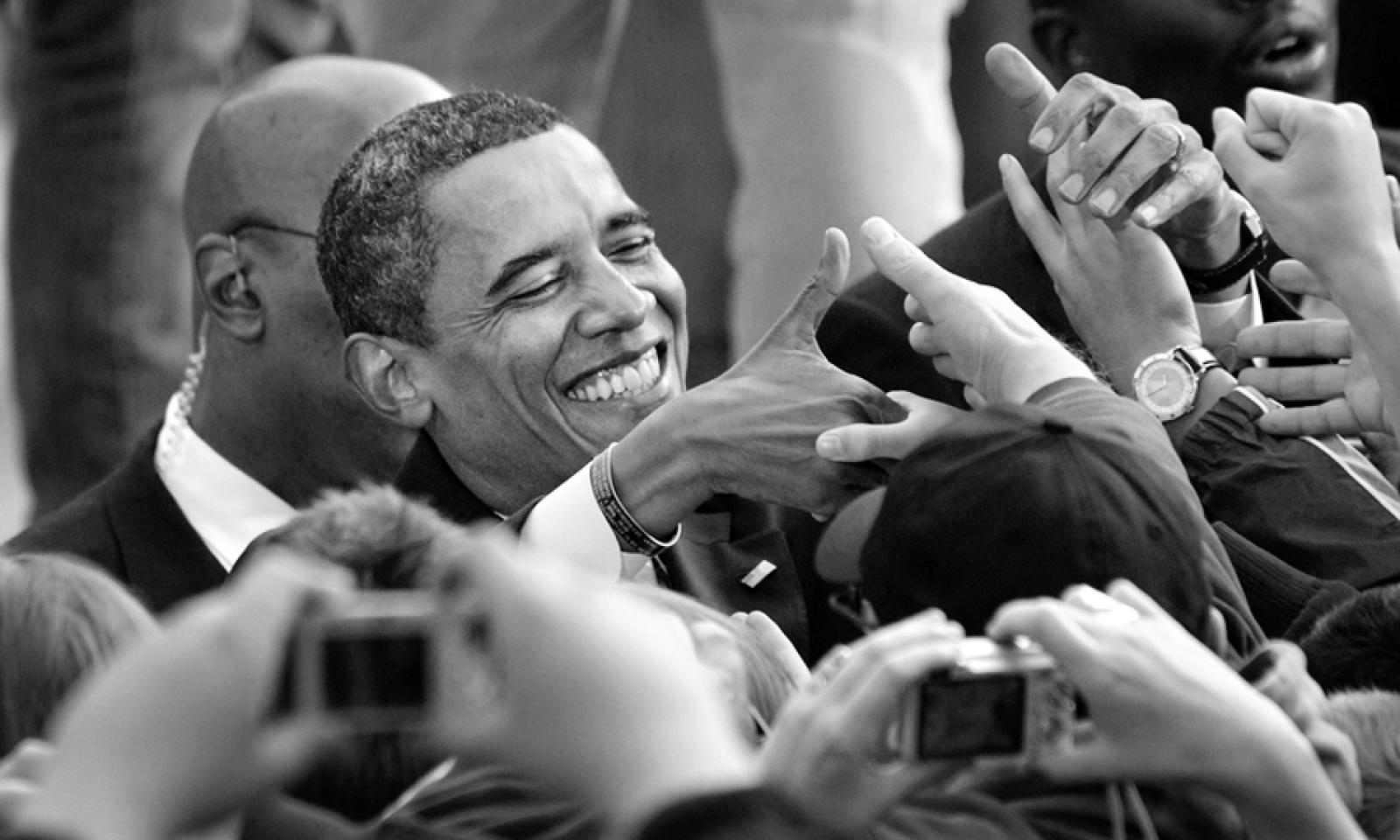Boston Globe op-ed columnist Derrick Z. Jackson is on the Island for his photography exhibit, From Iowa to the White House.
It shows at Cousen Rose Gallery from Thursday through Sept. 11. Sponsored by the African American Museum of Boston, the exhibit is free and open to the public — but the photos, signed by Mr. Jackson, are for sale to benefit the museum’s youth programs. He will appear at the Oak Bluffs gallery on Thursday, August 27 and Friday, August 28 from 10:30 a.m. to 12:30 p.m. to meet visitors.
Though a working journalist, Mr. Jackson demonstrates a talent for photography, which he describes as a “serious hobby.” These photographs trace the epic journey of candidate Barack Obama from the February 2007 announcement of his candidacy in Springfield, Ill., to the newly inaugurated President’s first White House press conference in January 2009.
Mr. Jackson’s photographs capture some of the most provocative moments of the campaign; he traveled to nine states and the District of Columbia. This aspect of Jackson’s career should be of great interest to those who have read his columns but not seen the magic of his camera. It may also be a revelation of his work with Crew 56 of Massachusetts (a wing of the Boy Scouts of America) and his commitment to exposing inner city youth to the wilderness as a way of understanding nature and those benefits America’s parks and preserves offer its citizens.
It was sheer luck that I reached Mr. Jackson and his wife, Michelle Holmes, last week as they happened to be driving through the village of Berlin, N.H., where his cell phone worked. The couple had been in the wilderness of New Hampshire, enjoying the hobby they love most, hiking and photographing the pristine wilds of the Mahoosuc mountain range which shares a border with New Hampshire and Maine.
Mr. Jackson said he is influenced by his wife, an epidemiologist who is developing and exploring potential sites in Uganda, South Africa, Tanzania and Nigeria for what would be the largest study on African health to date on diet and cancer.
The two were en route to their house in Maine. Mr. Jackson’s scenic photography often accompanies his Globe columns and travel stories. His images have been reprinted by the Audubon Society, the Wilderness Society and Lake Umbagog National Wildlife Refuge.
His photographic initiation came at age 16, while Mr. Jackson had an afterschool job as a reporter at the Milwaukee African American weekly newspaper; the editor asked him if he wanted a pass to a Milwaukee Bucks game. He writes: “That was exciting enough, as the year before, the Bucks of Kareem Abdul-Jabbar and Oscar Robertson had won the National Basketball Association championship. The editor unrolled his hand to reveal a floor photo pass! Never mind that the only camera I had was the Polaroid, utterly useless for action — unless you want to rationalize the artistic value of blur streaks. Oblivious to how other photographers must have silently laughed their heads off at me, I took my blurry eight shots allowed on the roll.”
While at the University of Wisconsin majoring in journalism, he worked for both the Milwaukee Courier and Star Times, covering professional and high school sports. He credits his “killing himself” in a class obituary assignment for getting him a job at the Milwaukee Journal his freshman year. The Associated Press had offices at the Journal as well, so before long the paper trusted him to shoot for the national wires. “This gave me wonderful baseline training in black and white photography,” he said. “And over the past 10 years or so I have focused on combining my photography with the column when appropriate.”
In the case of the Obama photographic project, he said: “There was so much electricity about his appearances. As a journalist, you had to remain detached, but you realized you were witnessing history. No matter what happened, it was significant.
“In Nevada,” he said, “women, white and Latino, were just as just excited as African Americans were for Obama. He tipped the scale. His campaign went beyond any ethnic consideration. . . . It fascinated so many people — college, high school thirtysomething moms. Everybody had their own script and he appealed to a wide group of constituents, gays, African Americans, women.”
Mr. Jackson’s images unmask this national story that often defies rationality and expresses itself in ways words cannot quite describe.
Though we elect a president every four years, this time was like no other, Mr. Jackson said. Many of the photos are of everyday people at campaign events, sitting, standing, waiting, all somehow tapping into the significance of the race and the message of real change.
How did Mr. Jackson plan? “The only piece where I was thinking in advance,” he said, “was the one with the American flag in the background in Independence, Iowa, the week [Mr. Obama] was defending why he didn’t wear the American flag lapel pin. I couldn’t think of a better moment when he represented the flag; [It occurred to me] if he wins he will represent the flag in a way no African American has done before, not even the military. It showed the promise of the country.”
Otherwise, he said, the Obama images were “shots of the moment . . . hands reaching out toward him fit the moment of the campaign; standing on the soap box.”
The soapbox image of candidate Obama, so powerful in its simplicity, seems a symbol of our Constitutional right to free speech.
“Barack Obama’s election marked the culmination of nearly 400 years of African American struggle in America, but his new brand of patriotism transcends race,” Mr. Jackson said.
His photographs define a new generation of American thinking, tempered by the civil rights movement and enjoying benefits derived therefrom. They will benefit children, but they prove empowering for us all.





Comments
Comment policy »